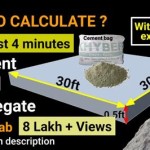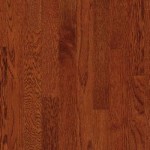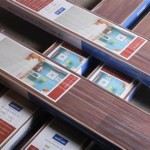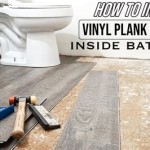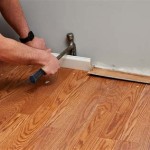Indoor Basketball Court Flooring: A Comprehensive Guide
The performance and safety of an indoor basketball court are inextricably linked to the quality of its flooring. The flooring material impacts everything from athletic performance and injury prevention to maintenance requirements and overall lifespan of the court. Selecting the appropriate flooring requires careful consideration of various factors, including the level of play, budget constraints, and specific performance characteristics desired. This article provides a comprehensive overview of indoor basketball court flooring, exploring the different material options, their advantages and disadvantages, and key considerations for installation and maintenance.
A well-designed basketball court floor not only contributes to the aesthetics of the facility but also plays a crucial role in player comfort. The ideal surface should provide adequate cushioning to reduce impact on joints, consistent ball bounce for predictable gameplay, and sufficient traction to prevent slips and falls. Furthermore, the flooring should be durable enough to withstand the constant wear and tear associated with athletic activity, minimizing the need for frequent repairs or replacements.
The options available for indoor basketball court flooring have expanded significantly over the years, offering a range of materials with varying performance characteristics. From traditional hardwood to modern synthetic surfaces, each option presents its own unique set of benefits and drawbacks. Understanding these differences is essential for making an informed decision that aligns with the specific needs and priorities of the facility.
Hardwood Flooring: The Classic Choice
Hardwood flooring has long been the gold standard for indoor basketball courts, prized for its classic appearance, exceptional performance, and durability. Maple is the most commonly used hardwood species due to its hardness, strength, and resistance to wear. A typical hardwood court consists of individual maple planks that are precisely milled and installed over a resilient underlayment. This underlayment provides shock absorption, reducing the impact on players' joints and improving overall comfort.
The advantages of hardwood flooring are numerous. It offers a consistent and predictable ball bounce, essential for high-level play. The natural grain and texture of hardwood provide excellent traction, minimizing the risk of slips and falls. Furthermore, a properly maintained hardwood court can last for decades, making it a worthwhile investment in the long run. Hardwood floors also offer a visually appealing aesthetic that is highly valued by players and spectators alike.
However, hardwood flooring also has its drawbacks. It is generally more expensive than synthetic alternatives, both in terms of initial installation costs and ongoing maintenance. Hardwood is susceptible to moisture damage, requiring careful climate control to prevent warping or cupping. Regular sanding and refinishing are necessary to maintain the court's performance and appearance. Damage from heavy equipment or sharp objects can also be costly to repair.
Installation of a hardwood basketball court requires skilled professionals with specialized equipment and expertise. The subfloor must be level and properly prepared to ensure a smooth and even surface. The maple planks are then carefully installed, ensuring tight seams and proper alignment. After installation, the floor is sanded, sealed, and finished with multiple coats of polyurethane to protect the wood and enhance its durability. Regular maintenance, including sweeping, dust mopping, and periodic refinishing, is essential for preserving the beauty and performance of a hardwood court.
Synthetic Flooring: Modern Alternatives
Synthetic flooring options have gained considerable popularity in recent years, offering a more affordable and versatile alternative to traditional hardwood. These surfaces are typically made from recycled rubber, polyurethane, polyvinyl chloride (PVC), or other synthetic materials. Synthetic flooring is available in a variety of forms, including rolled sheets, interlocking tiles, and poured-in-place systems. Each type offers its own unique set of advantages and disadvantages, making it important to carefully consider the specific needs of the facility before making a decision.
One of the primary advantages of synthetic flooring is its cost-effectiveness. Synthetic materials are generally less expensive than hardwood, both in terms of initial installation and ongoing maintenance. Synthetic courts are also more resistant to moisture damage, making them a suitable option for facilities that may not have strict climate control. Many synthetic surfaces also offer excellent shock absorption and energy return, reducing the impact on players' joints and improving athletic performance.
Synthetic flooring also offers greater design flexibility. These surfaces are available in a wide range of colors, patterns, and textures, allowing for customization to match the facility's branding and aesthetic preferences. Synthetic materials can also be easily integrated with custom logos, graphics, or court lines. The ease of installation is another significant advantage. Many synthetic flooring options, such as interlocking tiles, can be installed quickly and easily without the need for specialized tools or equipment.
However, synthetic flooring also has its drawbacks. While some synthetic surfaces offer comparable performance to hardwood, others may have a less consistent ball bounce or less predictable traction. The durability of synthetic flooring can also vary depending on the specific material and construction. Some synthetic surfaces may be more susceptible to scratches, scuffs, or punctures than hardwood. Regular cleaning and maintenance are still necessary to prevent the buildup of dirt and debris and to maintain the appearance and performance of the court.
The installation process for synthetic flooring varies depending on the specific type of material. Rolled sheets are typically glued to the subfloor, while interlocking tiles are simply snapped together. Poured-in-place systems require specialized equipment and expertise to ensure a smooth and even surface. Proper subfloor preparation is essential for all types of synthetic flooring. The subfloor must be level, clean, and dry to ensure a proper bond and prevent problems such as bubbling or delamination.
Key Considerations for Choosing Basketball Court Flooring
Selecting the right flooring for an indoor basketball court is a complex decision that requires careful consideration of various factors. The level of play is a primary consideration. High-level competitive play typically demands the consistent performance and durability of hardwood flooring. Recreational facilities or multi-purpose gyms may find that synthetic flooring offers a more cost-effective and versatile solution. The budget constraints of the facility are another important factor. Hardwood flooring is generally more expensive than synthetic alternatives, but it may offer a longer lifespan and better return on investment in the long run.
The specific performance characteristics desired are also crucial. Factors such as shock absorption, ball bounce, traction, and durability should be carefully evaluated based on the needs of the players and the intended use of the court. The maintenance requirements of different flooring options should also be considered. Hardwood flooring requires regular sanding and refinishing, while synthetic flooring typically requires less intensive maintenance. The climate control capabilities of the facility should also be taken into account. Hardwood flooring is susceptible to moisture damage, requiring strict climate control to prevent warping or cupping. Synthetic flooring is generally more resistant to moisture, making it a more suitable option for facilities that may not have strict climate control.
Finally, the aesthetic preferences of the facility should be considered. Hardwood flooring offers a classic and timeless appearance, while synthetic flooring offers greater design flexibility. The flooring should complement the overall design and branding of the facility. It is essential to consult with experienced flooring professionals to discuss the specific needs of the facility and to evaluate the different flooring options available. Reputable flooring contractors can provide valuable guidance and expertise to help ensure that the right flooring is selected and installed properly.
The long-term success of an indoor basketball court depends on many factors, but the choice of flooring is undoubtedly one of the most important. By carefully considering the different material options, their advantages and disadvantages, and the specific needs of the facility, it is possible to select a flooring system that will provide years of reliable performance and contribute to a safe and enjoyable playing experience.

Indoor Basketball Court Flooring Outdoor Tiles Mateflex

Indoor Court Tiles Sport For Basketball Courts

Indoor Sports Tiles Low Cost High Quality Basketball Court

Premium Indoor Sports Tiles Court Basketball Flo

Indoor Basketball Vinyl Court Kits Wood Look Flooring Easy To Install C

Indoor Sports Tiles Low Cost High Quality Basketball Court

Residential Indoor Basketball Versacourt Game Courts

Indoor Sport Court Flooring Tiles Minnesota Mn

Indoor Basketball Court Flooring Outdoor Tiles Mateflex

Indoor Home Basketball Court Floors Cba Sports Contact Us
Related Posts

